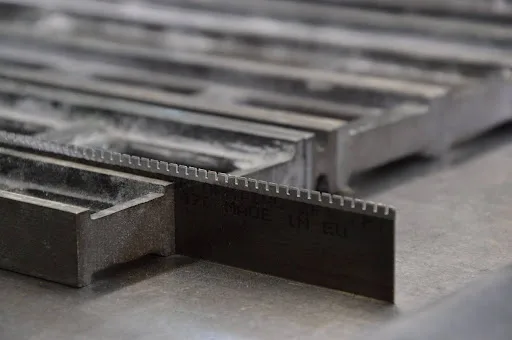5 minute read
In a world where precision and efficiency are critical manufacturing components, staying at the forefront of technological advancements is non-negotiable. This is especially true for die-cutting solutions. From packaging to automotive parts, die-cutting plays an integral role in producing accurate and reliable products at an impressive rate. But what makes technology so indispensable in this field? Read on and explore why modern die-cutting solutions heavily rely on the latest tech and how it shapes operations across industries.

The Evolution of die-cutting
Die cutting has come a long way from its humble beginnings. Initially, manual processes dominated the scene, relying on hand-cutting methods that demanded time and human effort. While effective in their time, these traditional techniques presented limitations in speed, accuracy, and scalability. Today’s die-cutting solutions have evolved significantly thanks to technological innovation that allows for increased precision and efficiency. In the medical field, high-speed Rotary medical die cutting machines with an extensive range of innovative capabilities enable the configuration of medical devices and possibilities in presentation, style, and format. This technology can perforate almost any material to a bespoke pattern.
Over the years, advances such as automated systems and digital controls have transformed the die-cutting landscape. Automated machinery now requires minimal human intervention, reducing errors and boosting output. This progression has led to more intricate designs, previously unimaginable with manual techniques. Technology has enhanced the capabilities of die-cutting machines and broadened their applications across various industries. With advancements, manufacturers can now cater to specialized needs and complex designs, paving the way for new opportunities and solutions.
Precision Meets Technology
A significant advantage of incorporating technology in die-cutting is its remarkable precision. In industries like packaging and electronics, where exact measurements are paramount, leveraging advanced technology ensures that each cut is precise to the millimeter. This level of precision is achieved by integrating computer-aided design (CAD) systems.
These systems allow designers and manufacturers to simulate and plan every aspect of the die-cutting process. This minimizes errors and optimizes the workflow. With real-time data and feedback, adjustments can be made swiftly, enhancing accuracy and reducing waste. Additionally, precision technology has enabled the creation of complex geometries that were previously unattainable. By utilizing laser and waterjet cutting technologies, manufacturers can efficiently execute intricate patterns, meeting the demands of modern design and innovation.
Enhancing Efficiency with Automation
Automation is a pivotal player in modern die-cutting solutions. By automating processes, companies can achieve higher productivity rates while maintaining consistency in quality. Automated die-cutting machines are equipped with sensors and computer controls that streamline operations, reducing the need for manual oversight.
These modern systems can operate continuously, maximizing throughput and minimizing downtime. This is crucial for industries that require large-scale production, where speed and efficiency can directly impact profitability. Automation also allows seamless integration with other production processes, creating a cohesive manufacturing ecosystem. Furthermore, automation supports sustainability efforts by minimizing resource consumption and waste. By optimizing material usage and energy efficiency, automated systems contribute to a more eco-friendly manufacturing environment.
Customization and Flexibility
In today’s market, customization is critical to standing out. Consumers expect products tailored to their specific needs and preferences. Technology in die-cutting has empowered manufacturers to offer a high degree of customization without compromising efficiency or cost-effectiveness. Advanced software and equipment enable quick adjustments to design and production parameters, allowing for a personalized approach. This flexibility is essential in industries like fashion and automotive, where unique designs and specifications are the norm.
Technology facilitates swift transitions between different projects. The ability to customize extends beyond just design. Manufacturers can also select materials and finishes that align with customer requirements, adding value to the end product. This adaptability is a game-changer, fostering innovation and creativity in product development.
Streamlining Production Processes
Integrating technology into die-cutting solutions streamlines production processes by enhancing department communication and coordination. Real-time data sharing and analytics empower teams to make informed decisions, optimizing the production line. Integrated software systems help manufacturers monitor each stage of production, from design to delivery. This transparency ensures that issues are promptly identified and addressed, minimizing disruptions and maintaining product quality.
Bridging the Gap with Digital Transformation
Digital transformation is reshaping industries, and die-cutting is no exception. By integrating digital technologies, companies can bridge gaps between traditional manufacturing methods and modern demands. Digital platforms enable seamless collaboration between teams, suppliers, and customers, fostering innovation and agility. Cloud-based solutions provide access to critical data and insights, supporting decision-making and strategic planning. Digitalizing die-cutting processes also enhances traceability and accountability, ensuring compliance with industry standards and regulations. This transparency builds trust with stakeholders and strengthens brand integrity.
Technology is undeniably essential for modern die-cutting solutions. The benefits are vast and transformative, from precision and efficiency to sustainability and innovation. By leveraging advanced technologies, companies can stay competitive, meet customer demands, and drive growth in an evolving landscape. For manufacturers looking to stay ahead of the curve, investing in technology is not just a choice but a necessity.




